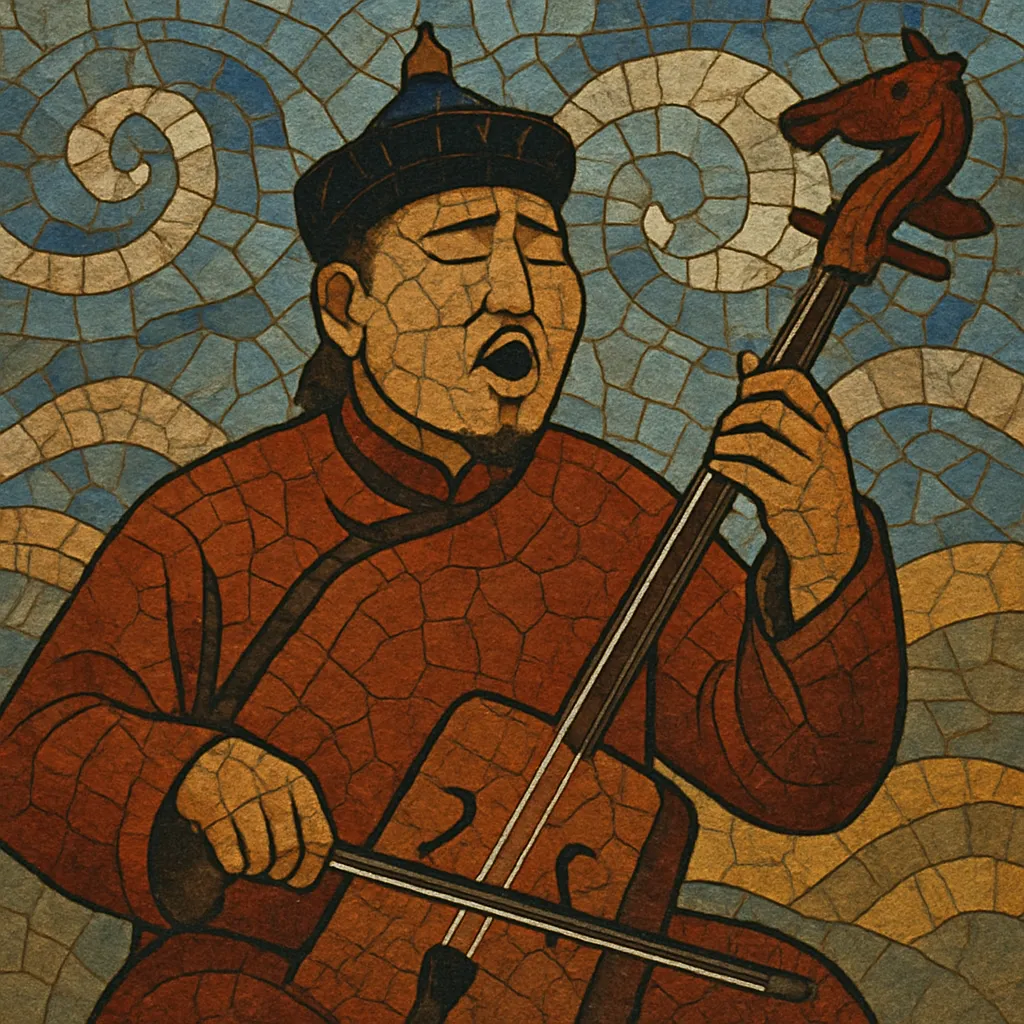Bogino duu, literally “short song” in Mongolian, is a strophic vocal genre characterized by concise melodies, clear meter, and compact poetic lines. In contrast to the ornate, expansive melismas of urtiin duu (long song), bogino duu favors syllabic text-setting, narrower range, and memorable refrains.
The songs typically use pentatonic or pentatonic-centered modal language, with gentle ornaments and expressive but controlled vibrato. They are commonly accompanied by the morin khuur (horse-head fiddle), and may also feature limbe (transverse flute), yochin (hammered dulcimer), tovshuur (lute) in western regions, or light percussion. Lyrics often celebrate everyday life, love, festivity, horses and pastoral scenes, and community humor.
Bogino duu is central to social gatherings and stage performance alike, where its directness, singability, and strong sense of pulse make it accessible to both trained vocalists and community singers.
Bogino duu emerged as a complementary counterpart to the famed Mongolian urtiin duu (long song), reflecting a need for shorter, easily memorizable strophic pieces suitable for dances, feasts, and communal celebrations. While short, strophic folk items existed for centuries, the modern conception of bogino duu coalesced during the 19th century among Khalkha and other Mongol groups, drawing on deeply rooted pastoral poetics and pentatonic melodic idioms.
During the 20th century—especially in the socialist era—state ensembles and conservatory training helped standardize vocal technique, accompaniment practices, and repertoire. The morin khuur became the canonical partner to the voice, and arrangements sometimes incorporated limbe, yochin, and even accordion for stage productions. Radio, recordings, and national festivals broadened dissemination and solidified a recognizable bogino duu style distinct from urtiin duu’s free-rhythm expansiveness.
Today, bogino duu flourishes in concert halls, festivals, and community life. Traditional performers preserve regional dialects, melodic turns, and verse types, while modern ensembles adapt bogino duu for world-music stages and fusion contexts. Its tuneful, meter-driven character makes it a natural gateway for contemporary Mongolian folk-pop, folk-rock, and global collaborations, ensuring the genre’s continued vitality.
Use pentatonic-centered melodies (e.g., anhemitonic pentatonic) with a moderate ambitus. Favor stepwise motion, short phrases, and tasteful, localized ornaments rather than long melismas. Aim for memorable hooks and a clear cadence at the end of each line.
Write in a strophic form with repeated melody over multiple verses. Favor concise poetic lines (often 5–7 syllables per hemistich) about daily life, love, landscapes, horses, and festive social scenes. Keep imagery vivid and direct, balancing tenderness with community humor.
Unlike free-rhythm long songs, bogino duu typically uses a steady meter (often duple). Choose a moderate tempo that supports dancing or easy group singing. Allow slight rubato at line endings for expression, but maintain an overall clear pulse.
Use a natural, forward vocal tone with controlled vibrato. Ornament sparingly at phrase edges. Project text clarity and shape phrases with gentle dynamic arches rather than sustained, wide melismas.
Center the morin khuur as the primary accompaniment, doubling or answering the vocal line. Add limbe or yochin for timbral color; in western-influenced settings, a tovshuur can provide strummed patterns. Keep textures light so the voice and text remain central. Introduce brief instrumental interludes between stanzas.
Record in a warm, intimate acoustic environment to capture vocal nuance and morin khuur overtones. On stage, alternate verses and short instrumental tags to maintain flow. Encourage audience participation on refrains to reflect the genre’s communal roots.


